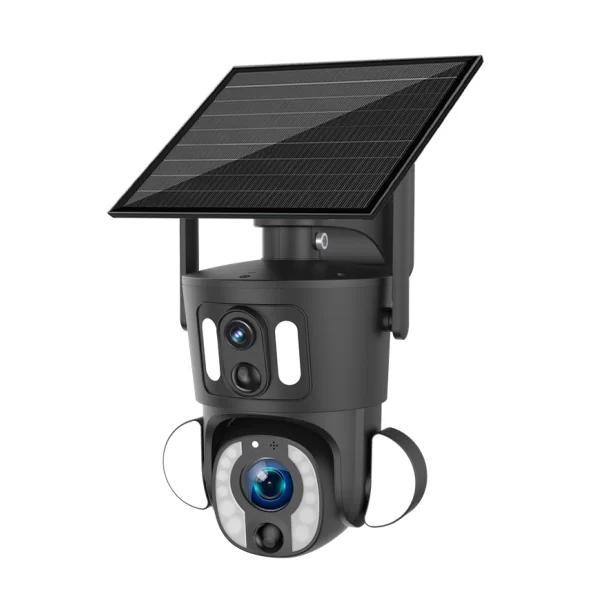Home camera wireless protocols: Trends you need to know
For environments with or without network, home cameras will use two protocols, WiFi and 4G. Let’s analyze the trends related to WiFi and 4G protocols?
1. WiFi
Currently, mainstream WiFi includes WiFi4 (802.11n), WiFi5 (802.11ac), and WiFi6 (802.11ax). WiFi supports two frequencies: 2.4GHz and 5GHz. Different frequencies have different rates. While WiFi5 is optimized for 5GHz, 2.4GHz still uses WiFi4 technology. WiFi6 has been optimized for both 2.4GHz and 5GHz, with faster speeds and greater adaptability to congested environments.
Note: The technical term is that WiFi6 introduces OFDMA (Orthogonal Frequency Division Multiple Access) and more efficient coding technology, which improves spectrum utilization.
But whether it is WiFi4/5/6, there is not much difference in wall penetration and communication distance indicators. Compared with 5GHz, 2.4GHz has better wall penetration and longer distance, but the speed will be lower.
Note: Physical formula: speed of light = wavelength * frequency. That is, the smaller the frequency, the larger the wavelength. The larger the wavelength, the stronger the diffraction, which means better wall penetration and communication distance. The smaller the frequency, the smaller the speed.
The specific WiFi4/5/6 parameters are as follows:

So when we get back to home security scenarios, what are the trends related to WiFi?
In the case of H265 encoding, the 4KP30 code stream is 6Mbps. In the case of H264 encoding, the 4KP30 code stream is 12Mbps.
Note: See the easter egg at the bottom for the calculation method.
Assume that a family has 10 4K cameras, and they are still 30 frames, plus 3 computers/mobile phones to watch movies. Calculated based on 10Mbps each, the total H265 code stream is 60Mbps+30Mbps = 90Mbps, and the total H264 code stream is 120Mbps+ 30Mbps = 150Mbps.
The actual rate of WiFi is generally 50-75% of the theoretical value. According to the lowest calculation, the theoretical rate of WiFi4 450Mbps is actually 225Mbps, which is much larger than the 150Mbps under H264 encoding. What’s more, current home scenes are far from reaching the resolution frame rate of 4K30.
Therefore, WiFi4 is far enough for the use of home cameras in ordinary families, and there is no need to upgrade. But low-power cameras are an exception, because low-power cameras have high requirements for the keep-alive mechanism between routers. WiFi6’s congestion adaptation optimization can effectively improve the keep-alive quality and reduce the camera keep-alive power consumption.
My personal observation is that WiFi6 will break out on low-power cameras first.
2024 Newest WIFI Version 10X Solar PTZ Camera On Launch!
2. 4G
For hunting cameras, outdoor solar cameras and other non-network environments, 4G is already a necessity. What trends will 4G bring?
Common 4G categories (Category) include Cat1, Cat4, Cat6, Cat9, Cat12, Cat16, and Cat18. Except Cat1, others are widely used on mobile phones. For cameras, we mainly look at Cat1 and Cat4. The specific parameters are as follows:

If the actual 4G rate is 50% of the theoretical value, the actual upload speed of Cat1 is 2.5Mbps, while Cat4 is 25Mbps. Cat1 conversion can cover the video resolution frame rate, and in the case of H265 encoding, it can support a maximum of 5MP20 in a single channel.
However, taking into account price and power consumption factors, it is important to know that the price of Cat4 is 4-5 times that of Cat1. Currently, Cat1 is still the best choice for 4G camera scenarios. After all, it can do single-channel 5MP20 and two-channel 3MP15. But two-channel 4MP15 is a bit difficult, without losing image quality.
My personal observation is that when 4G Cat1 cannot be upgraded to Cat4 in the short term, the 4G camera upgrade binocular will start from 2/3MP.
2024 Newest 4G Version 10X Solar PTZ Camera On Launch!
The following :
In the case of H265 encoding, generally without loss of image quality, the 2MP20 code stream is 1Mbps, converted to 4MP15 is 1.5Mbps, and the two-channel 4MP15 is 3Mbps. In the maximum case, single channel 4KP30, the maximum code stream is 6Mbps.
The code stream compression efficiency of H265: static pictures are 50% of H264, and dynamic pictures are 60-70%. For the convenience of calculation, 50% is used. In the case of H264 encoding, the maximum code stream is 12Mbps for a single channel of 4KP30.
If you have different opinions and suggestions on our articles, welcome to contact us for further discussion together!
Our email: [email protected]
Written by Ruibosi Electronic Co., LTD
Ruibosi Electronic Co., LTD is a professional manufacturer of 4g wifi Ubox app solar security cameras, tuya smart app 4g wifi solar security cameras, etc.
We are now officially opening global investment channels, and sincerely invite you to join us and become our agent or wholesale partner. We can provide competitive prices, and simultaneously provide you with a full set of product pictures, parameters, videos, product software, and hardware knowledge training, market Marketing training, and other materials to help you learn products as soon as possible, understand products, open up the market, better serve customers and win the market as soon as possible.

